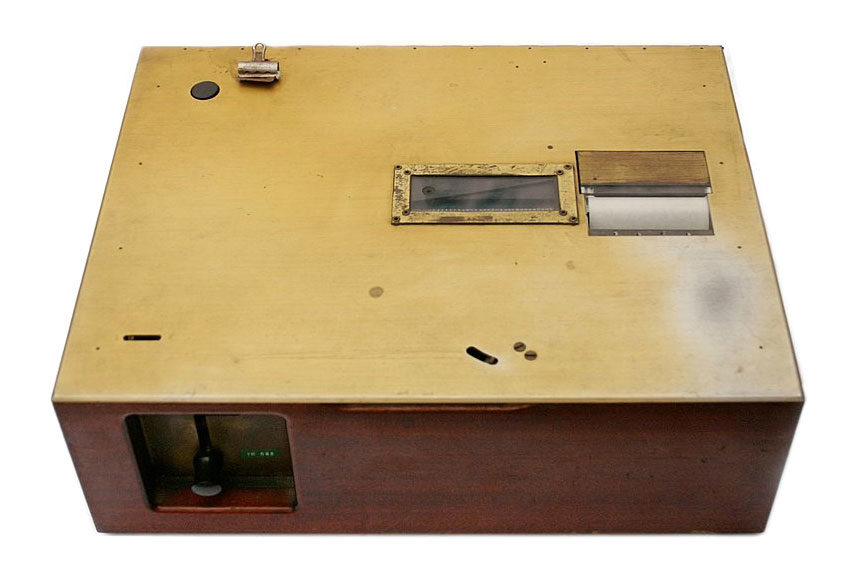It was 1960, and Americans were terribly worried about the state of their educational system. The Russians were pulling ahead of us in the space race; they had launched Sputnik I three years earlier, and ever since there had been intense pressure to turn out better educated young citizens. That, combined with the burgeoning school-aged population of baby boomers, led desperate educators to consider any and all solutions, from a longer school year to the use of “educated housewives as aides.”
One solution, devised by B.F. Skinner and based on his expertise in experimental psychology, seemed to carry much promise: the teaching machine. An article by Gay Gaer Luce in the September 24, 1960, issue of The Saturday Evening Post considered its ability to help students master material more quickly. Here’s how it worked:
One typical machine, about the size of a portable typewriter, has two small windows in the top. In one of these will appear the question, printed on a long roll of paper which winds upward within the machine. The student reads the question, writes his answer on the blank paper which shows under the second opening, and then flicks a lever on the side of the machine. This simultaneously reveals the correct answer—printed alongside the question, but hitherto hidden by a sliding mask — and covers the student’s answer with a sheet of transparent plastic, thus discouraging second thoughts. Another flick of the lever advances the roll to the next question, hides its answer and bares the right-hand window for the student’s pencil. At each step, the student is immediately shown whether he was right or wrong; and each question requires him to apply what he has just learned from the previous question, in turn adding a little more to his knowledge of the subject for application to the next question. The machine itself does not teach, of course. The instructive part of the device is the series of questions, called a program, contained in it.
The machine provided immediate feedback and constant positive reinforcement; it also allowed students to learn at their own pace. Skinner maintained that any given material could be learned in half the time, with half the effort.
Some educators were dubious about the machine’s place in the classroom: “Many shudder audibly at the ‘impersonality and isolation’ they foresee when children spend several hours a day with teaching machines,” Luce wrote. Others were supportive, but considered wide use in classrooms to be premature. One academic at the University of Pennsylvania dismissed those concerns: “[W]e can’t do much worse in education generally than we’re doing right now.”
The device paved the way for methods that are still used today in education technology. Teaching machines are now ubiquitous in the classroom, of course. But to answer the question posed in the title of the article, they have not replaced teachers — yet.
Featured image: B.F. Skinner’s teaching machine (Silly rabbit / Wikimedia Commons via the Creative Commons Attribution 3.0 Unported license)
Become a Saturday Evening Post member and enjoy unlimited access. Subscribe now



